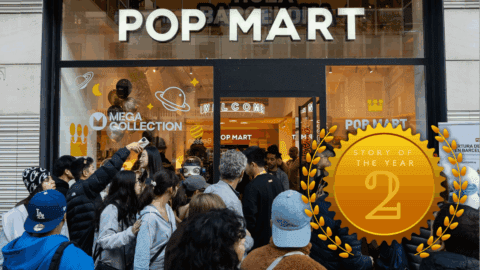With our Editors Perspectives columns, you’ll get insights and opinions from the Retail TouchPoints editorial team as they dig into the latest trends in retail, marketing and tech.
Back in 2022, the message was clear — retail crime was on the rise: “There’s no two ways about it,” said Gautham Vadakkepatt, Director of the Center for Retail Transformation at the George Mason University School of Business in an interview with Retail TouchPoints. “I’ve talked to several retailers and it’s a major issue that all the big retailers are dealing with.”
Possible culprits (beyond the thieves themselves) were the supply chain challenges the industry was still dealing with at the time, inflation driving up the cost of goods and even the lingering use of masks following the COVID-19 pandemic.
It all sounded plausible, and the prevailing view — that retail crime was on a rampage — was backed up by the National Retail Federation’s April 2023 Organized Retail Crime (ORC) report, which stated that “nearly half” of the $94.5 billion in 2021 retail shrink could be attributed to ORC. The perception gained even more support as Lowe’s, Dick’s Sporting Goods and Target all blamed ORC for negatively affecting their financial results.
Scary stuff — just the words “organized crime” conjure up visions of Tony Soprano and his cronies plotting murder, extortion and other illegal activities at the Bada Bing! And there was certainly some reality to it: the Retail TouchPoints 2023 Store Operations Benchmark Survey of retailers themselves revealed that “reducing theft/shrink” was a top store-level workforce management challenge for 46% of respondents, second only to the 53% citing employee training and empowerment.
There was only one little problem: the NRF’s startling statistic was arrived at by conflating survey data with Senate testimony. The statement about organized retail crime’s impact on shrink was an inference made by the analyst from K2 [the risk advisory firm that assisted with the report] linking the results of a 2021 NRF crime survey with previous Senate testimony by Ben Dugan, former President of the Organized Retail Crime Resource Center.
The upshot was that the NRF had to retract the claim earlier this month and update its report. This garnered the kind of coverage that no organization wants, including this recent New York Times article.
Crime Data Confusion
Don’t think that I’m gloating over this mistake (and kudos to NRF for owning up to it). The fact is that it’s extremely difficult to get accurate figures about retail crime — not just how much there is, but what exactly is causing it.
For example, while the popular image of “shrink” is customers stuffing items under their clothing (go to just after one minute in this Animal House clip to see what I mean), I learned long ago that a retailer’s employees, using techniques like “sweethearting” (cashiers ringing up items for less than the marked price in collaboration with the purchaser) or just plain theft, are often responsible for far more shrink than shoplifters. (That kind of makes sense as well: employees know how a retailer’s loss prevention systems work, so the unscrupulous among them would have a better understanding of how to game the system for their own benefit.)
Additionally, definitions remain vague. If a cashier “sweethearts” for his friends and family, how many people need to be involved for it to be classified as “organized retail crime”? Where do fraudulent returns fit in, and is it possible to definitively determine if these bad actors are working alone or for a larger group? (Amazon recently sued an international organization for its role in millions of dollars of returns fraud.) And let’s not even get into cybercrime, where the black hats do everything they can to cover their nefarious tracks.
The NRF admitted the challenges associated with getting accurate crime data: “We stand behind the widely understood fact that organized retail crime is a serious problem impacting retailers of all sizes and communities across our nation,” said an NRF spokesperson in comments provided to Retail TouchPoints. “At the same time, we recognize the challenges the retail industry and law enforcement have with gathering and analyzing an accurate and agreed-upon set of data to measure the number of incidents in communities across the country. Retailers and law enforcement agencies continue to experience daily incidents of theft, partner in large-scale investigations and report recoveries of stolen retail goods into the millions of dollars.”
Perception vs. Reality
But this narrative of a retail theft tsunami has been more than a data accuracy challenge. I’d say one reason the NRF’s figures weren’t challenged earlier is that they fit into a perception of overall lawlessness. And here we get into another sticky wicket, because those perceptions are frequently shaped by people’s political persuasion.
It’s a common trope of right-wing media to paint cities (particularly those run by Democrats) as flaming trash cans of criminality. As New York Times opinion columnist Paul Krugman recently wrote: “The putative shoplifting tsunami has been relentlessly hyped both by the usual suspects, such as Fox News, and by some politicians.” (Of course, my quoting a liberal talking head shows you where I’m coming from politically.)
I don’t have any brilliant methods for getting that “accurate and agreed-upon set of data” that the NRF, and the retail industry as a whole, would like. I only know that solving, or at least mitigating, the impact of retail shrink requires that we all get a much better idea of where it’s actually coming from.













